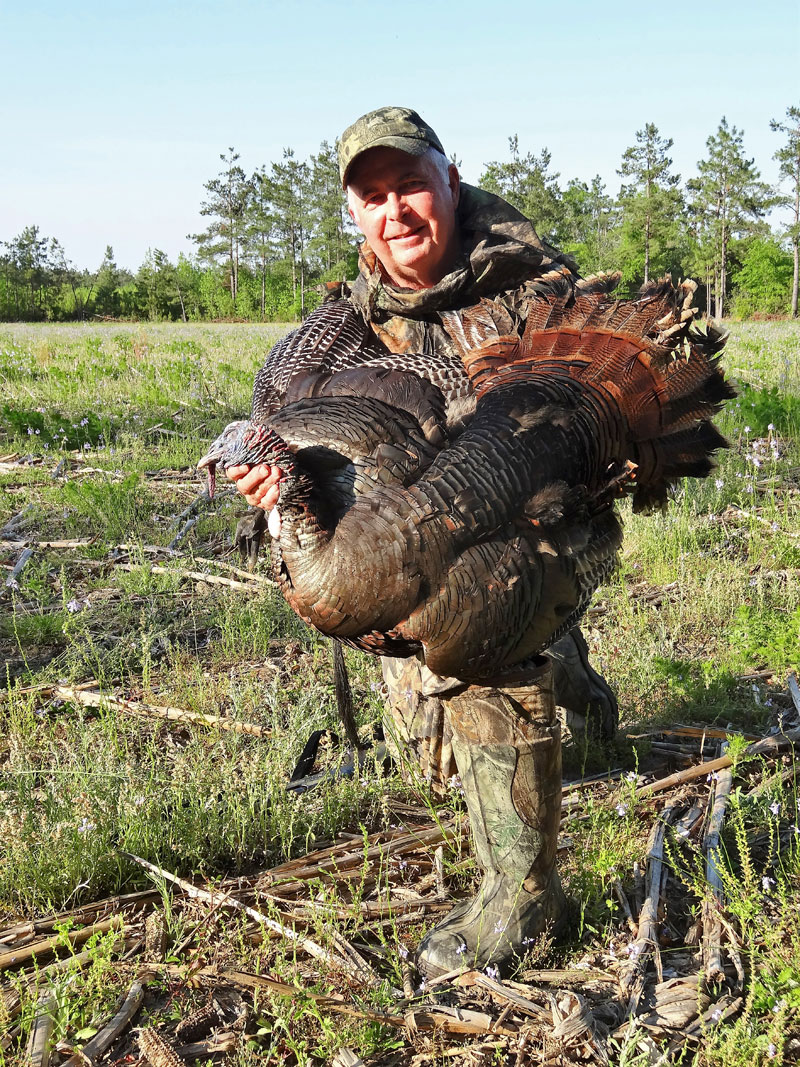
When the sun doesn’t shine or the wind blows a gale, how do you get gobblers to cooperate?
As if hunting turkeys in the Carolinas isn’t tough enough, our seasons coincide with some of the most-erratic weather patterns, stacking the odds even more against hunters.
Those treasured spring days, dawning cool and clear with winds out of the south at 2 mph, are rare, and the work and life schedule of most hunters means they must chase gobblers when they can. Tough-weather days include fog, wind, rain and sudden cold snaps. Taking a hard pass on these days means your hunting opportunities dwindle significantly.
Tyler Chappell, a guide from Fountain Inn, SC, has hunted gobblers most of his 36 years. For many years, his professional work life was such he was free to hunt those poor-weather days, but had to work on fair-weather days.
“I went turkey hunting at every opportunity and learned how to cope with tough weather,” he said. “No foolproof plan exists, but hunters can improve their odds significantly with a good strategy.”
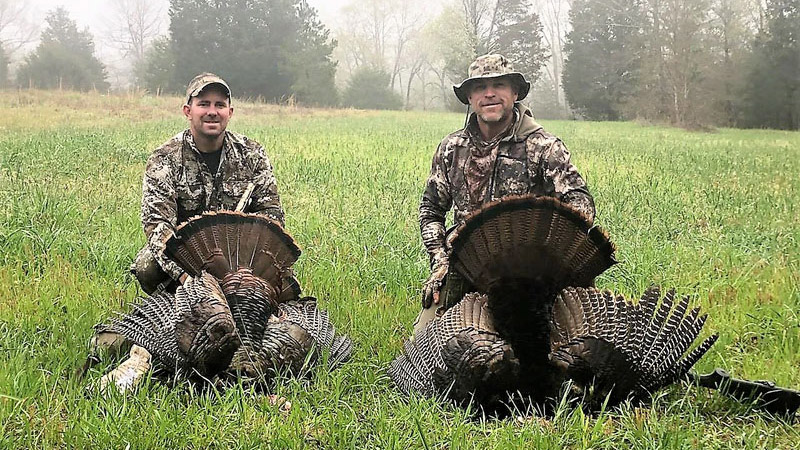
Of course, hunters have to be sensible, and if weather conditions are literally dangerous, with storms and lightning, then wait is the only option.
Chappell said his preferred fair-weather hunting style is “run and gun” — covering lots of territory. But the key for any of these tough weather days is to hunt with patience and perseverance.
“I’ve learned on tough weather days by slowing down the hunt, my success goes up,” he said. “That’s the core trait of tough-weather strategy.”
Foggy Mornings
Chappell said with changing weather conditions during turkey season, fog is a natural by-product.
“On foggy mornings, the birds will gobble on the roost but not aggressively,” said Chappell (864-419-1462). “They can’t see predators or other turkeys in thick fog, so they’re very cautious. I don’t approach the roost area as close as normal, and once set up, I’m very hesitant to move.”
Chappell minimizes the amount of calling he does, but he does use a call with a higher pitch for better sound travel on foggy mornings.
He said one of two patterns are likely to occur: the bird will gobble but not fly down immediately; or the bird will fly toward the sound of the call, but often won’t gobble as it approaches.
“It’s difficult to predict which scenario is occurring, thus, the need to remain in position,” he said. “Fog can be an advantage, because if the gobbler stays in the tree, and I hold position until it lifts, odds are good he approaches the location of my calls when he flies down.”
Chappell said other possibility is the most-treasured sight he’s seen in the turkey woods, that of a longbeard simply materializing out of the shroud of fog.
“When a gobbler materializes from the fog, it’s absolutely magical,” he said. “Of all the sights I’ve seen hunting turkeys, those are my best memories.”
Chappell said be ready to take advantage of that moment. If the gun is in your lap and not popped on the knee, you may not be able to close the deal.
Windy Days
Chappell said strong winds make hearing and seeing difficult for hunter and prey, but it does make it easier to predict where turkeys will be.
“With high winds, everything in the woods is moving, and they can’t detect predators — either by vision or hearing,” he said. “Their tendency move is to move to open areas.”
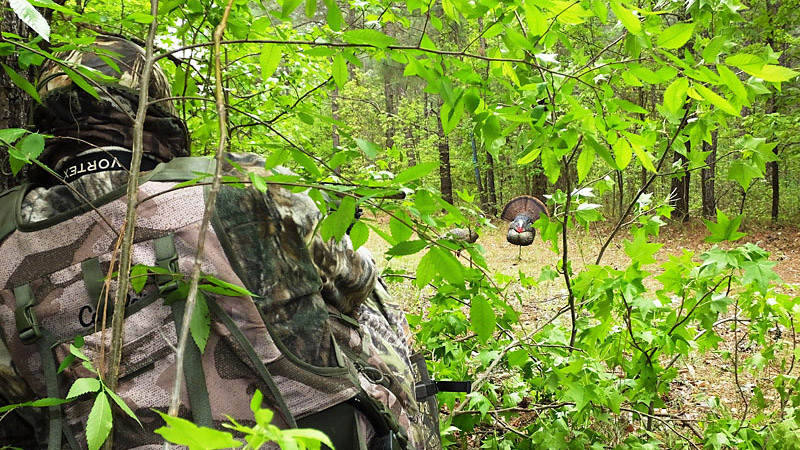
Chappell’s strategy is to slip around his property, checking areas using binoculars, scanning fields, pastures and any openings for turkeys.
When he sees a target, he’ll formulate a strategy.
“I’ll watch for a movement pattern from the turkey and then quickly move to an interception point,” he said. “They may gravitate toward a food source or pass near a point of trees. If the only nearby option is open roads, they’ll head for those. Once in position, I’ll call, and if they’re still a good distance off, I prefer high-pitched calls to better cut through the wind.”
If the field has some topographic relief or is shielded by some vegetation affording visual protection, he’ll set up decoys. He’ll have to set up in the woods, essentially an unnatural thing for a turkey to do on a windy day, so the visual aspect of a realistic decoy is key.
“I’m giving myself a chance with this tactic, and it’s worked a lot over the years,” he said. “Calling is usually loud at first to get his attention, then once he’s moving my way, I simply react to what he’s doing.”
Rainy days
Rain has multiple impacts, and strategies will vary. Callmaker John Tanner said hunting in the rain may be uncomfortable, but it can be productive.
If it’s raining at dawn, turkeys are most likely going to remain in the trees until it quits.
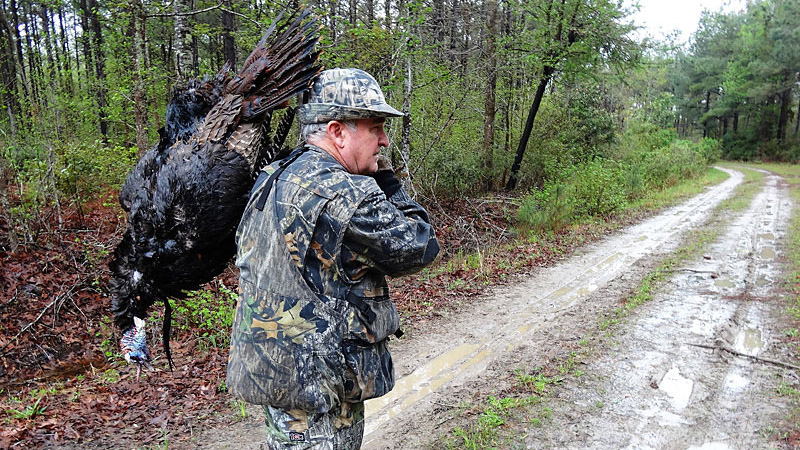
“Rain creates a lot of negatives for turkeys, including diminished ability to see or hear,” said Tanner (843-558-5472). “Also, gobblers are in the mode to strut and attract hens, and a soaking wet gobbler doesn’t fit that image.”
Tanner said gobbling on the roost is usually significantly reduced in the rain.
“Setting up in the rain before dawn can be worth the trouble,” he said. “Get close to roost areas and set up adjacent to an open field.”
When birds do begin to gobble, he’ll have their position and can choose to move, or if in a good place, call from that spot.
“When the rain stops and a hunter is in position, this patience pays off, because this late start on the day has gobblers ready to find a hen,” he said.
Have a plan in place for the rain
Chappell said if the rain doesn’t begin until after fly-down, and he’s already in the woods, his strategy changes considerably.
“I check the weather two or three days out from a hunt,” he said. “If a high probability of rain exists, I’ll have one plan already in place.
“I’ll go to that property before the day I hunt (and) set a blind in a field close to where turkeys are using,” he said. “I’ll set the blind out in the field and have decoys for a quick setup. When the rain begins, my goal is to beat him to the field, get decoys set up and begin intermittent calling until I get a gobbler approaching. Decoys in a field during a rain are highly attractive, because it’s the natural place for a turkey to be. The blind does not create an issue.”
Chappell said rain creates a bonus for the hunter and turkey.
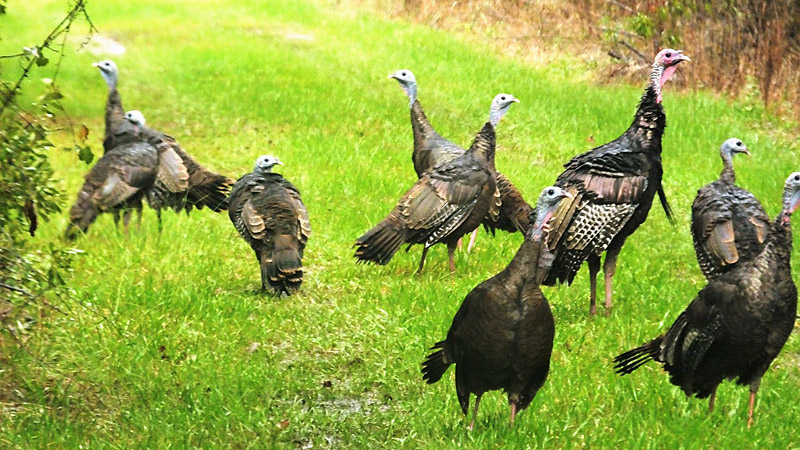
“With a hard, soaking rain, worms and various bugs will be on the surface available for turkeys, and they take advantage of it,” he said.
He said if you don’t have the option of setting up before the hunt, put a decoy in the field and call from the edge of the woodline as you would on a windy day.
If Chappell is hunting property that already has blinds set up on fields, those are high-value, rainy day targets for calling gobblers.
Cold and snow
Cold temperatures, especially after a short warming trend, impact turkeys, Chappell said.
“When the temperature nosedives after a warming trend, it impacts turkeys,” he said. “Roost gobbling may be active on a cold morning, but they often hush after flydown. If you call and get a gobble from a roosted bird, sit tight. They’ll likely approach in stealth mode.”
He said a hunter’s vigilance will often make or break the hunt.
“If you see him first, you can let him approach or make a finishing call to alter his course slightly,” he said. “And if he’s approaching my position, less calling is the best strategy.”
If you don’t get a gobbler working early in the morning, he said to keep hunting. Most days, the sun will warm the air quickly, and by mid-morning, gobblers often get back into the spring mode and begin gobbling. It can be a prime time to be turkey hunting.
Chappell said hunters need to be proactive in planning and implementing strategies during tough-weather conditions. Be a weather watcher and if fog, rain, wind, or cold conditions occur approach have the right mindset and wear the right clothing for the conditions.
“Tough weather days are good times for killing gobblers,” he said. “Fewer hunters are in the woods and the feeling of accomplishment of taking a gobbler when others won’t even hunt make it even sweeter.”
“Learning to be successful in tough conditions will make anyone a more effective turkey hunter in any weather,” he said.













